Tuesday evening, I received my long-awaited XHDATA D-808 from AliExpress via the postal service. Yesterday morning, I unboxed it and started charging the included 18650 Li-Ion cell. I haven’t properly put it on the air yet but if you’re interested in some initial reports, check out these previous posts.
Dimensions
I was curious if the Digitech D-808 was identical in size to the Digitech AR-1780–I could tell even from D-808’s initial information that these two radios share a common ancestry.
To my surprise, they are not identical in dimensions! With that said, the differences are very marginal.
The D-808 is 7 mm wider and 2 mm deeper than the AR-1780.
To confirm measurements, I checked out the manufacturer specifications of both radios. Oddly, the specs also indicate that the AR-1780 should be 3 mm taller than the D-808 but I don’t detect this difference. I measure them to be equal in height.
The telescoping antennas are identical in height and number of segments.
Of course, as you can tell from the photos, the D-808 body is light grey in color while the AR-1780 is black.
Batteries
The Digitech AR-1780 uses four 1.5V AA cells while the XHDATA D-808 uses one less common 3.7V 18650 Li-Ion rechargeable cell (included).
External Power
The XHDATA D-808 has a standard 5V Micro USB port for internal changing. The AR-1780, on the other hand, uses a much less common 7V DC plug.
Having a 5V micro USB port is a huge plus for the D-808, in my opinion! While travelling, I always have at least one micro USB charger.
Backlighting
The LCD display appears to be identical in size and display information, however the D-808 has blue backlighting while the AR-1780 has orange backlighting.
Keypad
Other than variations in button shapes and color, the only difference between the two radios is the location of the power button.
As Guy Atkins mentioned in a previous post, the D-808 keypad buttons are almost flush with the radio body. The buttons on the AR-1780, on the other hand, are more prominent and tactile.
Accessories
The Digitech AR-1780 shipped with no accessories–the only two items in the box were the radio and the owner’s manual.
I was surprised when I opened the D-808 box to find a padded carry/travel bag, USB charging cable and even a compact external wire antenna.
Summary
There are actually few differences between the XHDATA D-808 and the Digitech AR-1780 in terms of physical appearance and function.
All in all, though, I prefer the D-808 package which ships with a carry bag, power cord and external wire antenna. In addition, the D-808 uses a standard and convenient Micro USB port for charging!
In terms of size/weight, the differences are negligible and wouldn’t sway my purchase decision.
Over the course of the next week, I hope to spend some time comparing their performance on the air. Though they appear to be from the same family, will one sibling outperform the other? We shall see!

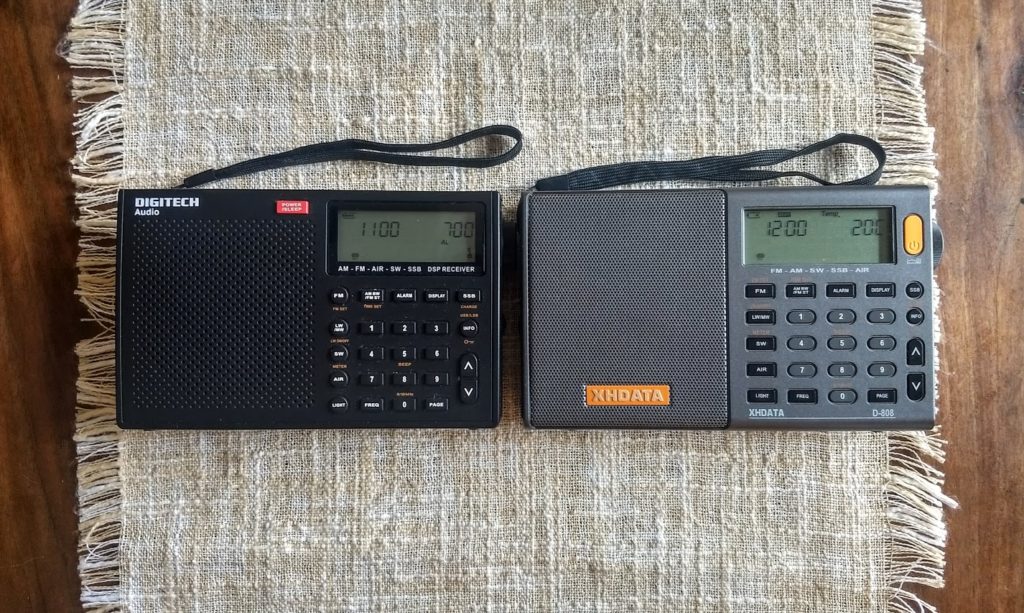
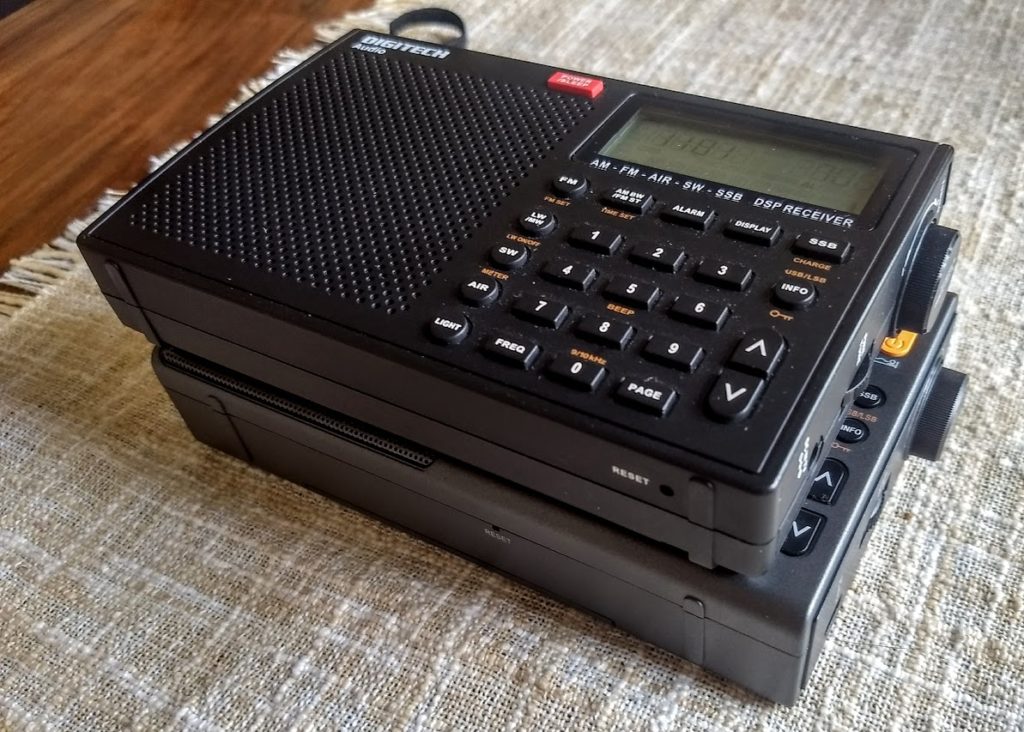
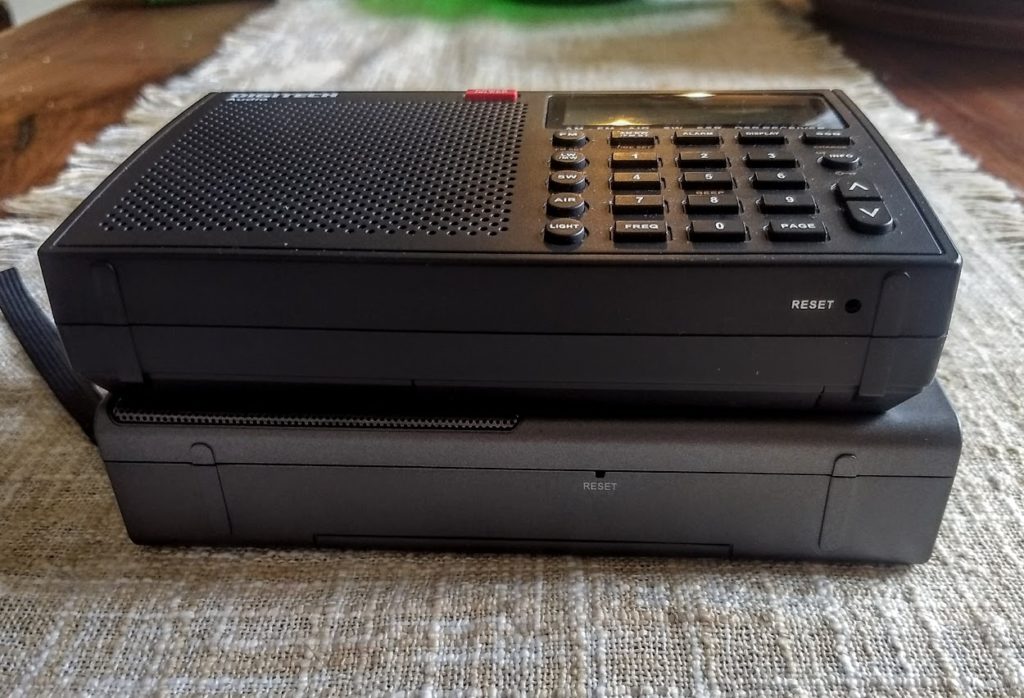
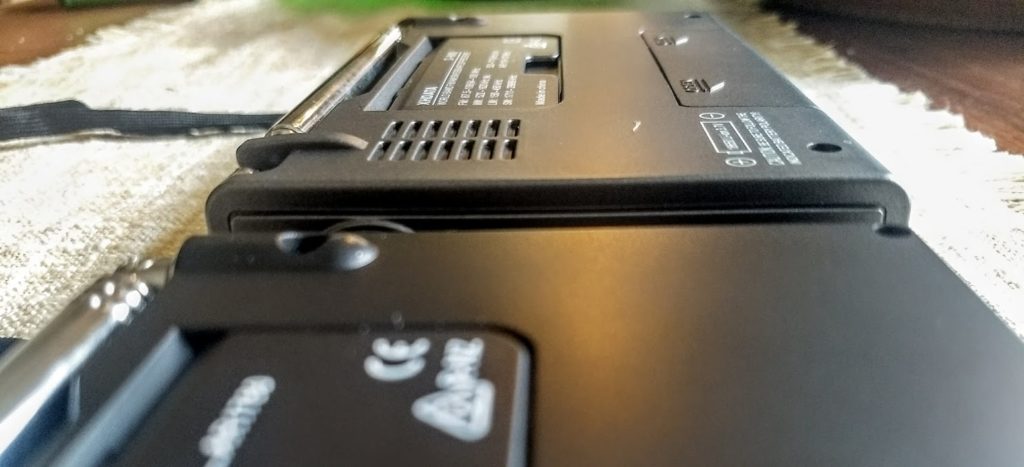
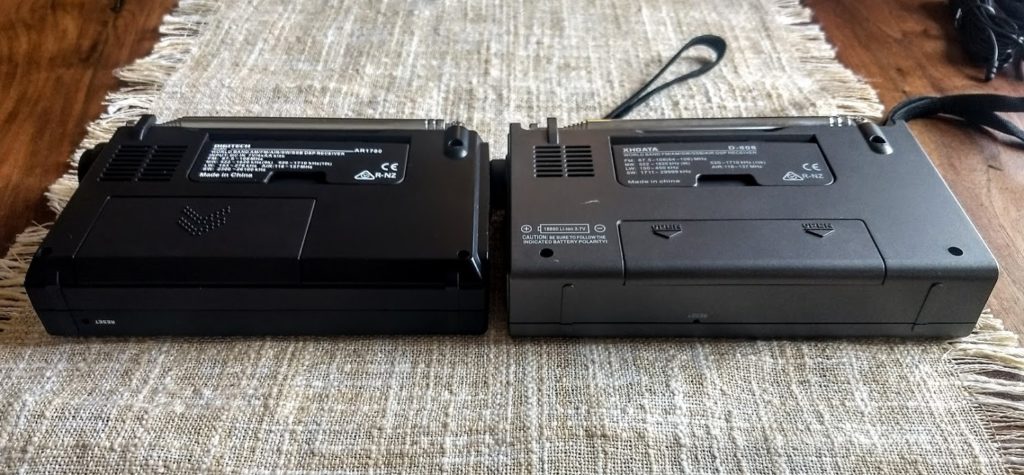
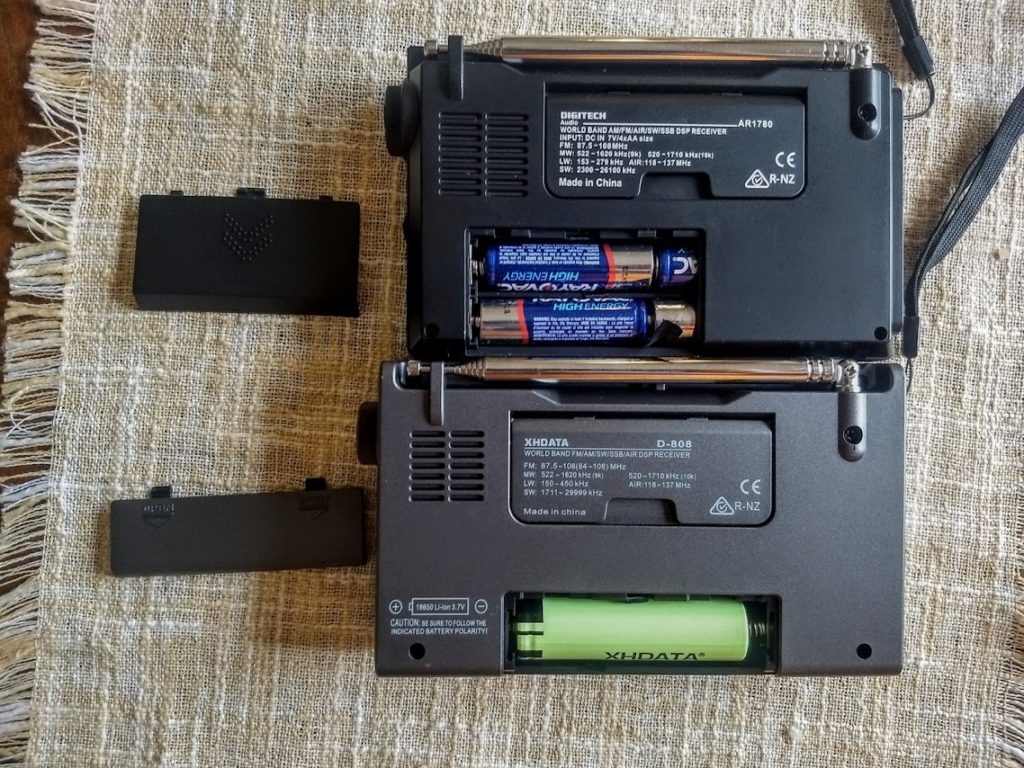
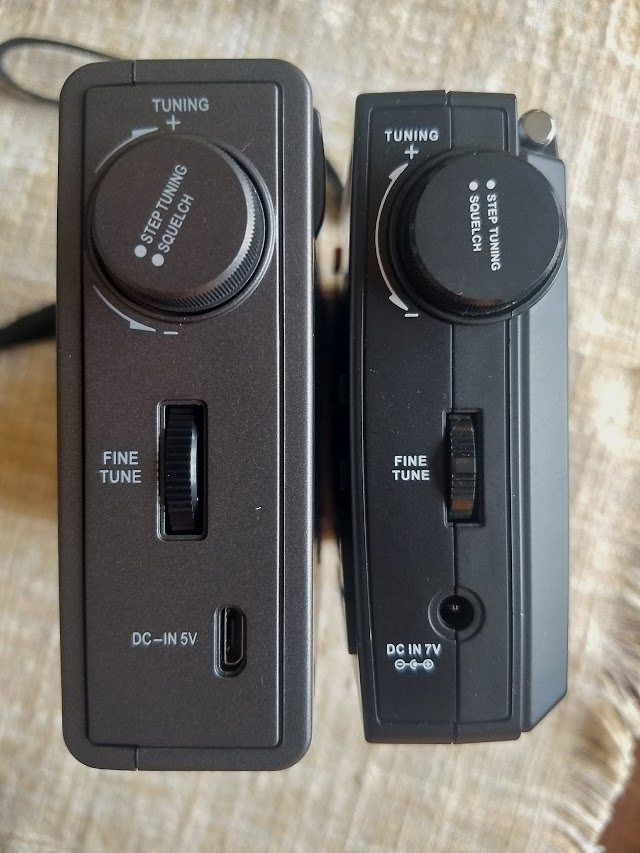
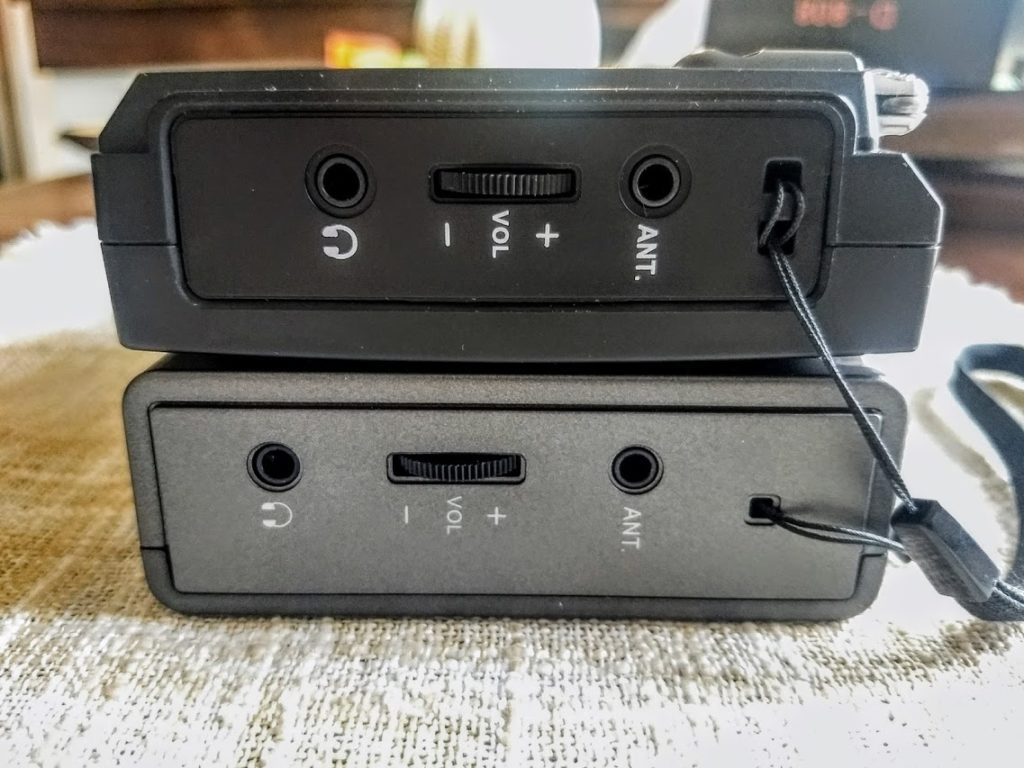
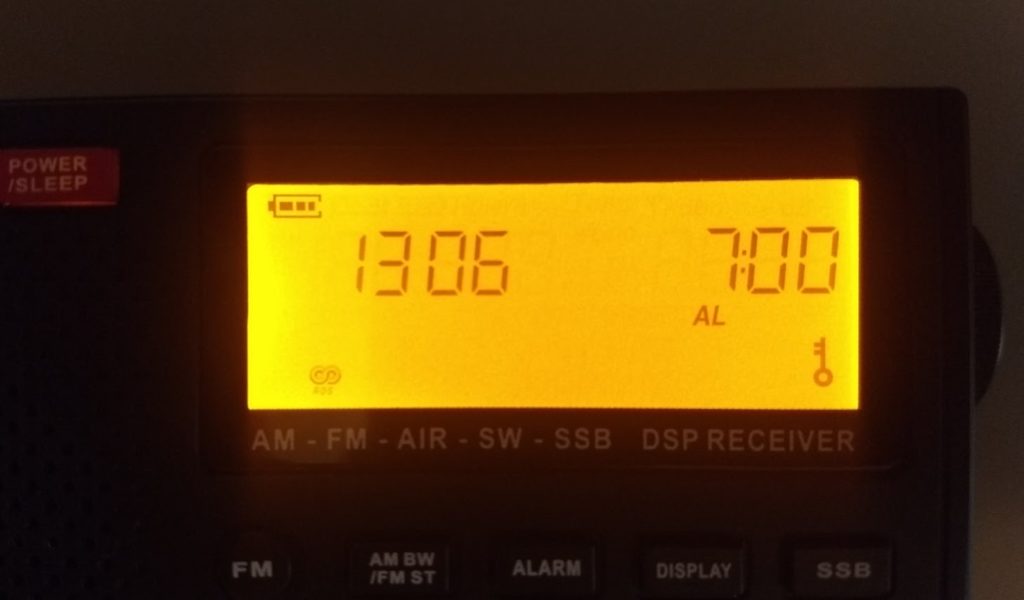
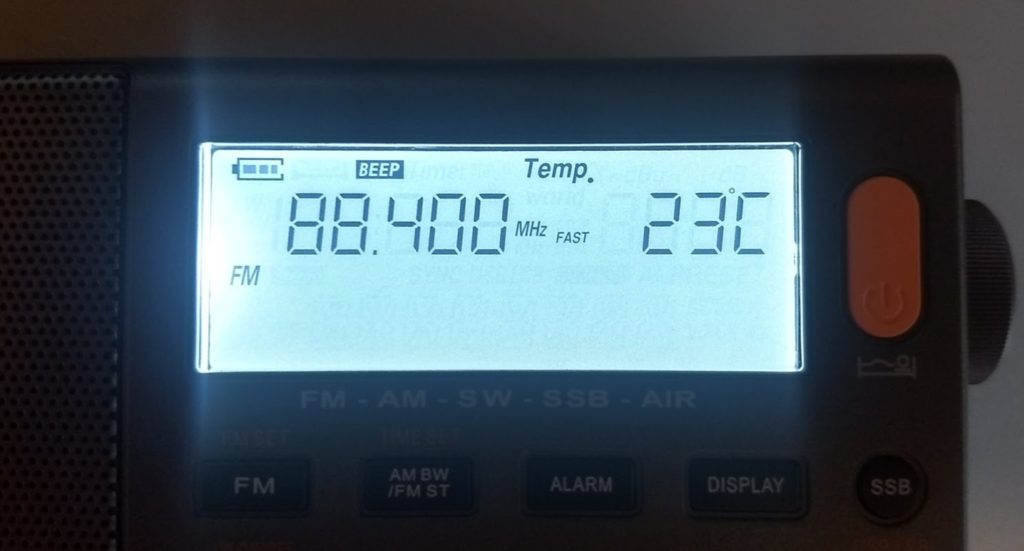
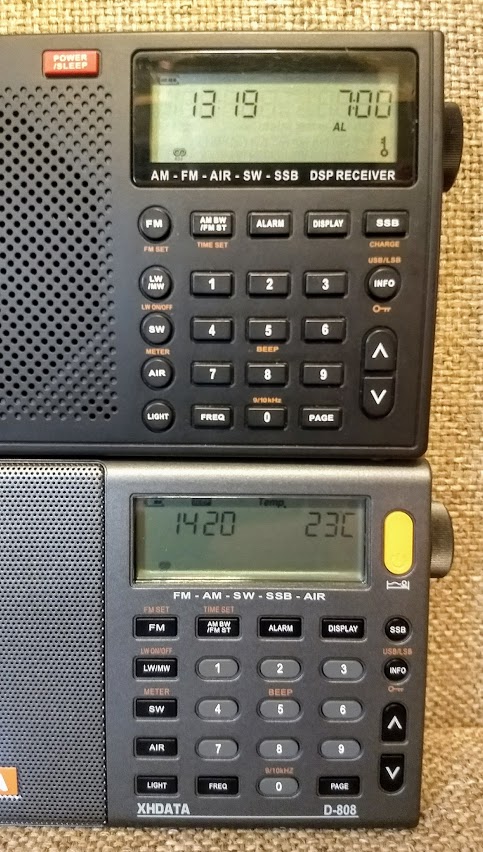
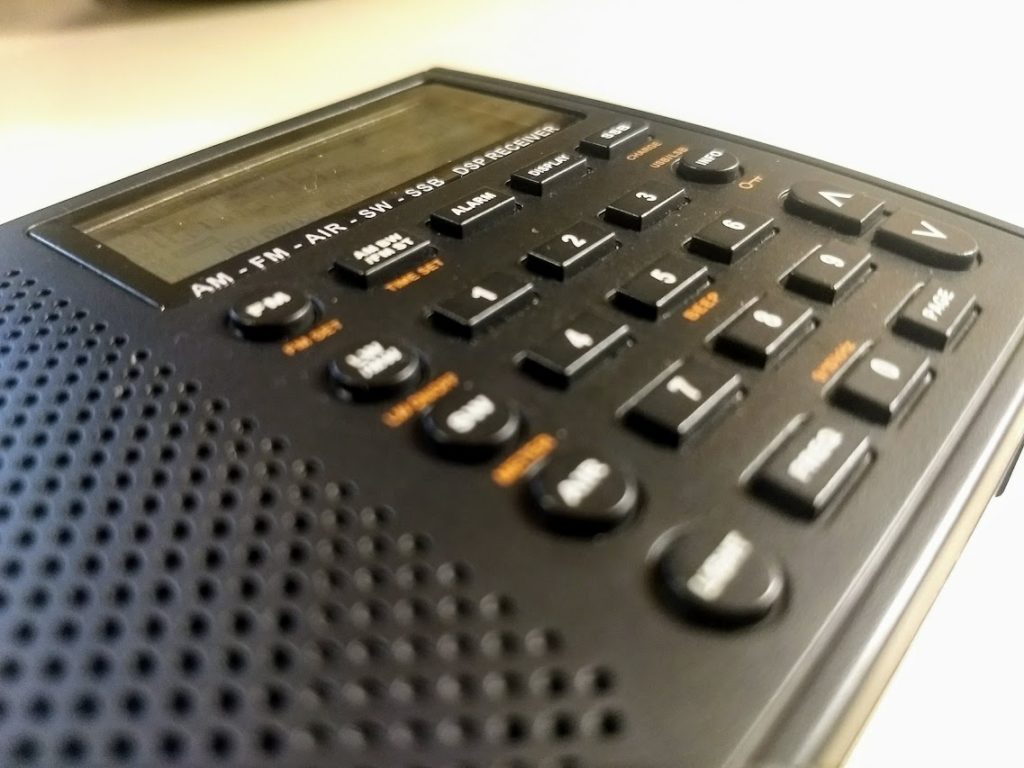

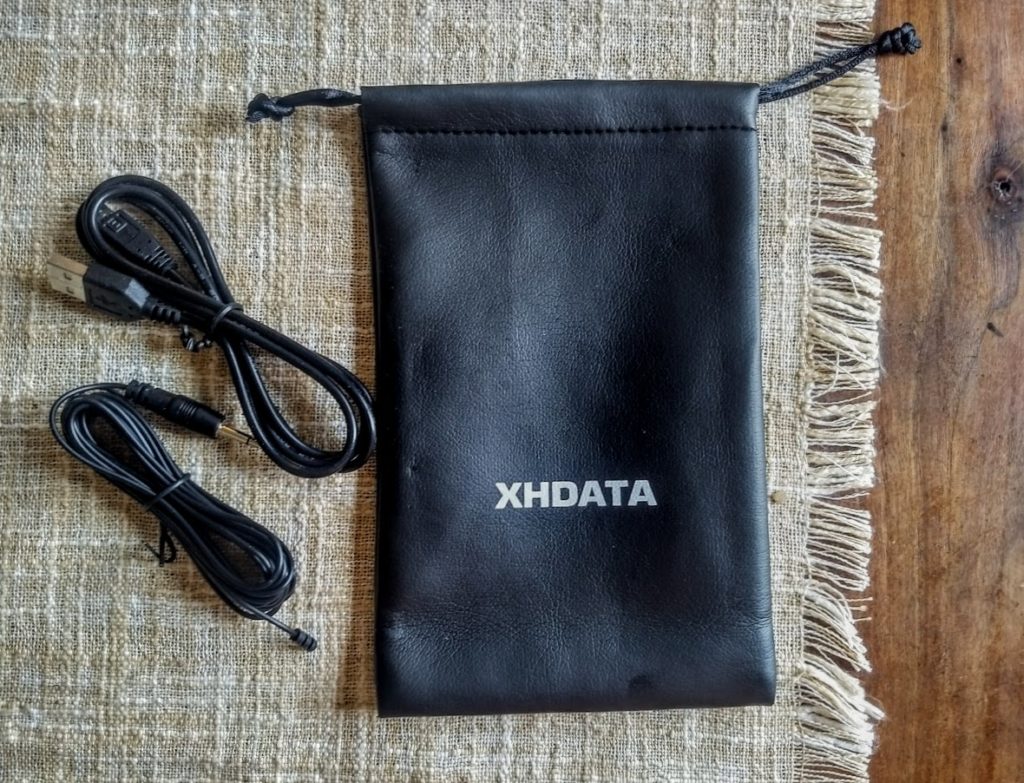
A quick note re: the AR-1780 requiring a 7v AC Adapter.
My AR-1780 works perfectly, with no negative consequences, with a Grundig G3/Grundig G5/Eton E5 AC Adapter (they are essentially the same radio and they all use the same Grundig SY-0625). The 06 denotes 6v and the 25 denotes 250 mA … it’s (+) polarity … so, the Digitech AR-1780 works fine with this more common 6v AC Adapter.
Be advised, the Eton Executive Satellite uses the SY-0630. 6v 300 mA should also be okay, *BUT* this is a negative (-) polarity tip adapter and the Digitech AR-1780 requires a (+) tip!
My G5 uses an SY-08020 with 8v output, 200mA. It came with the radio.
I’m also will be happy to order the D808, I wonder how it’s AIR feature ?
How much listening time will a charge gives?
I see it now on ALI for 70$
If a set takes a 18560 battery, then it will take two shorter 16340 batteries.
Careful there: while two 16340 batteries might fit in place of an 18650, they all have the same voltage, generally 3.7 nominal or 4.2 fully charged. The D-808 might not be designed to handle double the voltage without frying! Just because you can physically put two batteries in, doesn’t automatically mean they’ll work. I downloaded the owner’s manual and there is no mention of the acceptable range of battery voltage.
Similar issue with two CR123 cells. While they will physically fit, they are 3 volts when fresh, so 6 volts to the device, instead of a maximum of 4.2 for a single, properly charged 18650. One needs to make sure the device can handle the extra voltage first!
Lastly, even if the D-808 can handle the voltage of two rechargable 16340 cells, I would suggest not charging them in the unit. At the very least, make sure that they are protected cells, having a circuit to prevent overcharging and over-discharging. For safe charging, the cells would need to be perfectly matched, so the same exact make and model, the same mAh capacity, the same age (number of charge and discharge cycles), the same charge level when installed etc. Unprotected and mismatched Li-Ion cells used in series are a recipe for disaster…
Have a screwdriver? Lets pop the hood and see what is underneath the cabinet, take photos of the innards!
LOL! Pix of the Golden Screwdriver will not show all details. Using various meters helps a lot. This degree of detail is not shown on the ARRL multiple-choice tests.
Thanks Georges, I learned a great deal from your comments. It is difficult to do an accurate receiver sensitivity measurement due to the action of AGC. Accurate sensitivity measurements require that the receiver be operated without AGC, that is, with AGC shut off or bypassed.
The high Z antenna input for most multiband portables will do quite nicely for most receiver antennas regardless of impedance.
Hi Dan,
Generally the input impedance of this kind of receiver is very large to permit the telescopic antenna to act as an active antenna. So the mismatch is large with the 50 ohms output of my generator. However, using this simplistic approach, gives the opportunity to compare receivers, and the D808 is one of the more sensitive that I came from.
I agree with you, old technology gives overall better results for selectivity. I have had a lot of portable receivers. One of the bests was the ICF-2001D for sensitivity and synchronous detection, but at the expense of selectivity as the phasing for USB/LSB was done at AF and the opposite sideband was prone to AGC action and reduction of sensitivity of the receiver. The lack of any RF selectivity led also to high IMD2 and IMD3 generation from remote strong signals on a large antenna.
So, from my point of view, the best overall receiver is the Sony ICF-SW55 thanks to its RF bandpass filters, its balanced FET mixer, its 2 ceramic filters, the narrow one giving good opposite sideband rejection, and also its IF derived AGC giving fast attack.
I still have one, and it behave finely on a large antenna.
To be honest, these DSP chip, even if not perfect, give exceptional results from cheap receivers. For me, the weakest point, for SSB, is low attack time of AGC giving high distortion during the beginning of SSB and CW signals.
Best regards
Georges F6DFZ
The AliExpress site is not accepting orders from the USA as of 11 January.
Hi Thomas,
After the first information from your wonderful website, I immediately ordered the XHData D808 receiver from Aliexpress for €62 including shipment to France.
I got it very quickly, shipped from Amazon UK !
I did a few tests on SSB. MDS is outstanding, the minimum signal from my HP generator at -127 dBm (0,1?V), is strong even on 28 MHz. Selectivity is also good, and the opposite sideband rejection is audibly also good. However I was unable to measure it because the S meter give the same indication over a few kHz around the signal of the generator. I suspect the opposite sideband rejection to be done by the DSP chip at AF, but I cannot confirm this.
Reception is very good on FM, and the AF from the loudspeaker is reasonable. On headphones, it’s very good. RDS works as it should and sets the clock of the receiver.
I did only a few minutes test on LW and MW, and it seemed OK, even if I don’t have a lot of experience on these bands.
SW AM listening was very good, good audio, great selectivity. I suspect that the bandwidths given are AF bandwidths as even the most selective were not too much muffled. If it was IF selectivity, the AF bandwidths would have been half the values and much muffled.
SSB and CW receptions are also very good even if the DSP chip has a long attack time and hence give distortion during the beginning of each message. About SSB, I think that this receiver is better than the PL880 and comparable to the PL660.
Reception is good on the short but sturdy telescopic antenna.
If you connect the receiver to a large external antenna, you will encounter many IMD signals. As there is no built-in attenuator, you will need an external one.
The manual is correct, but very short about the memories. ATS logs its findings into the first pages, so if you want to keep some memories, log them a few pages away.
The available pages are different with bands, FM has its pages, SW its pages etc…
Unfortunately, memories don’t keep the mode on SW, only the frequency and selectivity. After calling a memory, you will have to choose between AM, USB and LSB.
I was totally unable to light the “Preset” label on the display ?!?
Display and backlighting are very nice.
Somewhat odd, but the Squelch seems to work sometime on other bands that Air band !
Ergonomics are reasonable, quality of construction is good for the price.
Overall, for the price, this receiver is quite outstanding.
Best regards from France .
Georges F6DFZ
Great comments, Georges. The number of portable multiband radio reviewers that use a signal generator to actually do a receiver sensitivity test is just about zero. I would be happy to note some exceptions to this rule if there were any. Did you terminate sig gen RF output with 50 ohms for your test? I have noticed the same selectivity issue with other radios using DSP bandwidth filtering (including Tecsun and Eton (Grundig). These bandwidth settings have little effect on receiver selectivity. The outsider in modern DSP portables in this respect is the Sangean ATS-909X. Sangean wisely passed on the DSP filter capability of the Silicon Labs chip in favor of proven performance from more expensive and older tech Murata (of Japan) ceramic filters.
Add: The two muRata filters on my 2015 909X are IF filters for 4 and 6 kHz. These two ceramic filters alone offer selectivity options far superior to the 2, 2.5, 3, 4 and 6 kHz settings on my Eton Grundig Edition Satellit. Both radios offer additional settings for SSB. But, the DSP filters do seem to act more like AF filters and struggle with any relatively strong SW signals located 5 kHz or closer to the tuned frequency.
The Digitech takes 4 (not 3) AA batteries, resulting in 6 volts. This explains the odd 7 volt power supply which is probably used to charge the 4 AA batteries.
Doh! Thank you for the correction! 🙂 Yes of course 4 AA cells. Correcting this in the post.
Wonderful comparison Thomas. Will wait for performance comparison.
Hope somebody do compare it with Tecsun PL-660.
Regards
Rajesh Chandwani
VU2OEC
India
Hello Rajesh. I’ve compared D808 vs Pl-880 and PL-606. Slightly better then 606 in sw and mw, but little bit worse then 880 on fm. But it is without instruments, subjectively.
de RV1A